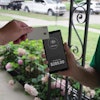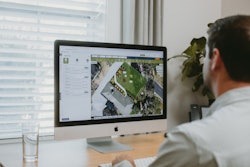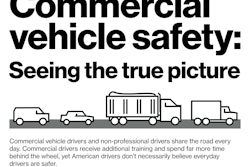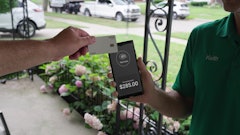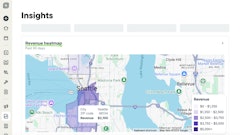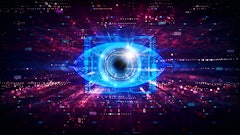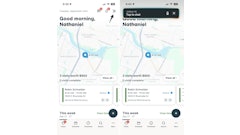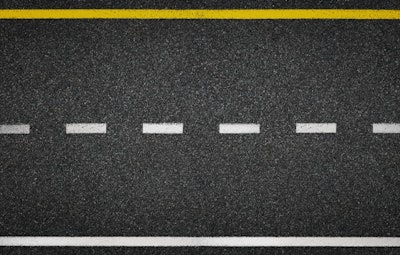
Distracted and inattentive driving are leading causes of vehicle-related accidents as the influx of mobile technologies competes for drivers’ attention. In-cab solutions help minimize multitasking during critical drive time and detect drowsy driving, aggressive driving and threats from other vehicles on the road.
“It all boils down to the individual employee’s context, such as their proximity to heavy equipment, work group and time of day, for example," says Joseph Boyle, TRUCE CEO. "Mobile device permissions adjust automatically and in real time as the employee’s environment changes throughout a shift. Dynamic enforcement of an employer’s mobile device policy based on each employee’s real-time context helps ensure workers are safe and productive, while still giving them the freedom to keep their mobile device on them throughout a shift. We don’t believe phone bans in work environments are the answer.”
Situational App Use Drives Safety
Trying to limit use through broad company policies has not proven very effective.
For example, when employees are on a jobsite, they may need access to certain applications. When that employee is in a vehicle, access to most applications, except hands-free calling, can be temporarily restricted. The use will be determined by the employer policy. The technology itself relies on contextual indicators.
“We are not interested in monitoring where people are. There are tracking technology companies that do that,” Boyle says. “We go after the root cause of the issue, which is that we’re addicted to our devices. We stare at them constantly, most of the time not even realizing that we’re doing it."
Beyond mobile technology distractions, there are other factors such as driver fatigue and aggressive driving habits that can lead to increased risk. In-cab camera technologies address these issues and protect drivers and companies from liability from accidents caused by other roads users.
 The Teletrac Navman DIRECTOR Event Viewer feature, paired with dashboard camera footage, can be used for a full view of unsafe driving events to coach drivers on driving behavior or acquit the driver of being at fault.Teletrac Navman
The Teletrac Navman DIRECTOR Event Viewer feature, paired with dashboard camera footage, can be used for a full view of unsafe driving events to coach drivers on driving behavior or acquit the driver of being at fault.Teletrac Navman
On one side, this technology proactively reduces accidents.
“The other side is more incident management or incident capture so that you can coach drivers, which will ultimately result in safer driving and on-road behavior,” says Mayank Sharma, head of global product management and UX, Teletrac Navman.
Other benefits include driver retention, lower insurance costs and minimizing maintenance costs.
“There is actually a connection between using this data and going to your insurance company to say my fleet is safer, and my premiums should be lower based on how my drivers drive,” Sharma says. “Also, driving safer by not braking too much and not cornering too harshly helps you with maintenance costs and fuel reduction cost.”
Additionally, dash cam technology presents a clear picture of driving events. “First of all, video provides visual proof and context around telematics-triggered events,” says Andrew Rybak, business development manager, marketplace, Geotab. “It can reveal what the driver was doing when a harsh braking event occurred. Video captured by dash cam can be used as evidence when a driver is incorrectly deemed at fault for an accident. The installation of a dash cam can immediately reduce accidents or close calls through alerts for unsafe behavior. Some drivers will also be more mindful knowing that a camera is monitoring their driving.”
Not all dash cams are the same. For example, John Palmer, GM of transportation intelligence, Omnitracs, notes there are dash cams that simply record audio and video to capture information in and around the vehicle as well as more proactive safety systems that are integrated with the vehicle that will alert the driver if they are distracted, fatigued, following too close or unsafely maneuvering the vehicle.
The driver-facing camera is important for implementation of proactive systems. “For fleets unwilling to capture what is going on inside the cabin, they may install a road facing-only dash cam, block the driver-facing camera or use the driver-facing camera as a sensor that does not capture video," Rybak says. "However, the most effective approach to keeping everyone safe usually includes a road- and driver-facing camera.”
The inward-facing camera is very focused on driver behavior. According to Sharma, phone usage is the most commonly recorded violation captured, followed by seat belt use.
Cameras will give you a true picture of what is happening in the fleet. “With cabin-facing dashboard cameras, the most common events typically captured are cellphone use, drowsy driving, eating or drinking distractions, improper seat belt use and tampering with the camera,” says Rybak. “With road-facing cams, they can capture forward-collision warnings, stop sign violations, risky lane departures and unsafe following distance.”
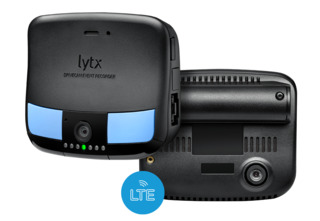 The DriveCam device mounted on the windscreen contains a forward looking lens and a lens focused on the interior of the cab. It also contains an accelerometer and other components to record data.Lytx
The DriveCam device mounted on the windscreen contains a forward looking lens and a lens focused on the interior of the cab. It also contains an accelerometer and other components to record data.Lytx
Safety systems can leverage streaming data in real time to measure impending inclement weather and advise the driver to reduce speed. It can also monitor vehicle health and the location of a vehicle to dispatch maintenance when there is an issue where they are parked unsafely.
AI technology can gauge the condition of the driver by tracking the iris and the direction the driver is looking.
“Those technologies are available and they’re pretty mature," Sharma says. "You are able to pretty accurately detect if the driver is distracted; it’s called engaged tracking. There is also head tilt tracking; if your head is tilted down, you really can’t focus on the road. You are focusing on something else.” Audible alerts are used to get the driver refocused.
Other technologies detect risk using a combination of sensors such as accelerometers, machine vision and artificial intelligence.
“Accelerometers allow us to capture unsafe driving events such as hard acceleration, braking, speeding, cornering and high G-force events,” says Ofelia Chernock, senior product marketing manager, Lytx. “Machine vision and AI provide additional vehicle and driver movements that can help identify risky and distracted driving.”
To ensure a successful implementation, companies need to communicate with drivers. “It is just transparency. You need to be open with your drivers about what you are actually recording and for what purposes.”
Dash Cams Enhance Telematics Data
Real-time monitoring through integrated technologies can proactively prevent accidents. However, there is a balancing act. Too many alerts coming from multiple devices can actually cause the warning devices to become the distraction.
“Because we are starting to see a breadth of safety alerts in the vehicle, it is important to integrate with the vehicle to only alert the driver from one system,” Palmer acknowledges. “For example, if the vehicle has a forward collision warning system, the dash cam will not confuse the driver by offering up duplicate alerts at the same time. With the growing breadth of potential alerts that may be given to the driver at any time, visual or text to speech alerting ensures that the driver clearly understands what they are being asked to do at that time.”

